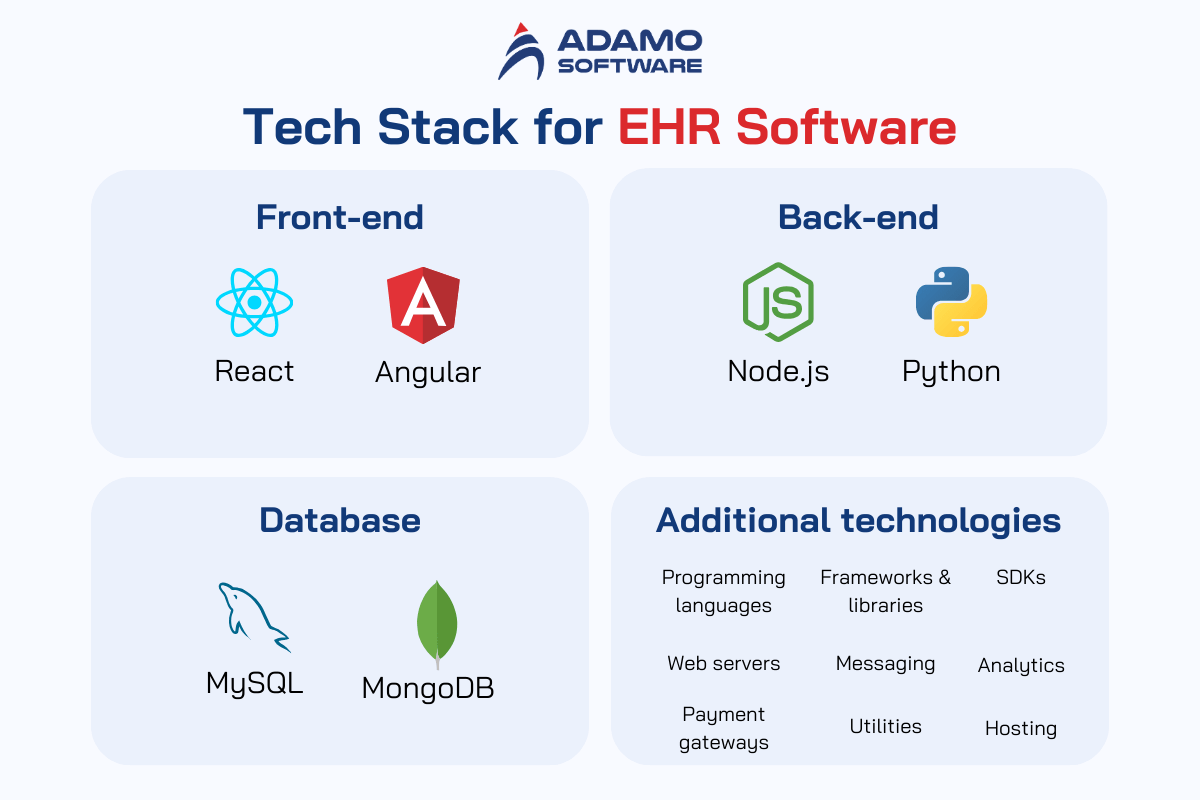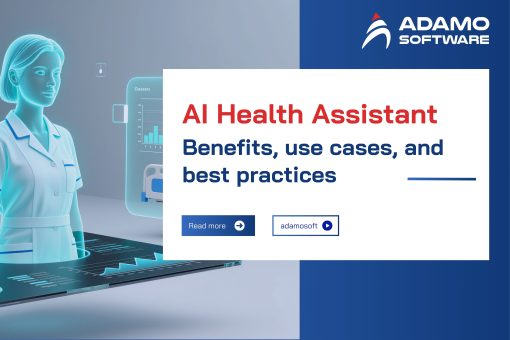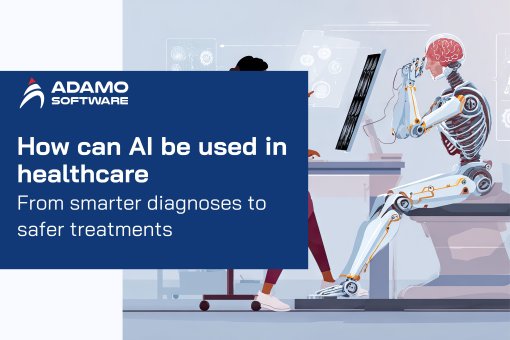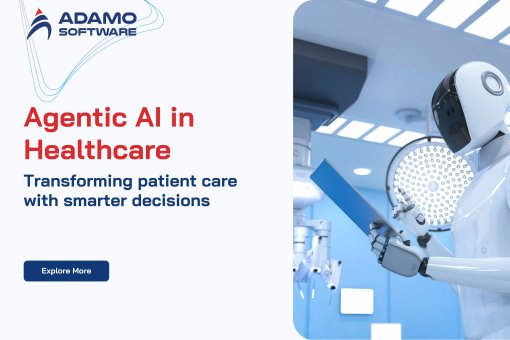What is EHR Integration? Tips to choose right tech stack for your ideal EHR

Electronic health records (EHR) are changing the healthcare industry for the better. It helps to store, share, and visualize patient data so much easier, efficiently, and securely. Taking advantage of this technology will help medical facilities enhance their workflow, productivity, and the quality of patient care significantly.
However, for those who are new to EHR, integrating it into their existing system can be a little tricky. Sounds like yourself? Don’t worry, we’ve got your back.
In this article, we will try to make that process easier for you. We’ll explore what is EHR integration and why it is so crucial for your healthcare facility. Additionally, we’re also gonna provide you with some guidelines on how to choose the suitable tech stack and implement your EHR effectively.
I. What is EHR Integration and why is it important?
So, what is EHR integration? EHR integration is the process of making medical records available across multiple electronic software solutions. This creates a centralized hub of patient data. It consolidates personal details, medical history, clinical information, and claims data into one convenient location. Thanks to this integration, patients can receive better care as doctors now have access to quality patient data almost instantly. Instead of spending hours finding or moving files, medical practitioners can focus on delivering care.
Now that you know what is EHR integration, you might realize how useful it is in solving current problems in healthcare. Without EHRs, the providers are left to deal with the administrative challenges that come with having to spend hours searching through patients’ records. These problems are solved by the integration of EHR since it gathers data and makes it accessible and manageable. This is time-saving and also reduces costs that are associated with moving data from one platform to another. Risk and quality gaps are also addressed by integration with EHR because it provides useful information that enhances communication between physicians.
The integration of EHR is essential in health management because it supports the continuity of care, productivity of employees, and loyalty of patients. By making data transfer and organization seamless, healthcare teams can dedicate their attention to enhancing health outcomes. The ability to gather and analyze scalable insights from patient data in one system helps identify patterns and areas for improvement. Ultimately, knowing what is EHR integration is the key to the effective use of healthcare data, improved patient care, and more effective healthcare.
You can explore more about What is EMR in Healthcare: Types, Features, Cost here.
II. Considerations to guide your EHR technology stack selection
Choosing the right tech stack for your EHR integration requires you to consider carefully every possible impact factor. Here are some of the most important considerations for your reference:

1. Scalability
Scalability is key. You must select a stack that is efficient in handling large amounts of data and a growing number of users. For example, when choosing technologies, healthcare professionals should consider how much data will be created in the future. This could be records or medical images of patients. From there, they can select technologies that would be capable of handling that. Distributed systems, NoSQL, or cloud services could be a great choice for this purpose.
Apart from that, you also need to estimate the number of existing users and select technologies for possible expansion horizontally or vertically. For healthcare software developers, microservices architecture and load balancing are a beneficial combination. Understanding what is EHR integration will assist you in making sure that the selected tech stack is ready for data and scaling.
2. Security
When working with EHR systems, developers are required to comply with HIPAA. This means that they have to use technologies that support encryption, access control as well as audit trails. That is why they should use cloud platforms that have compliance features integrated into their system.
The technologies used in healthcare IT systems should be those that have good security features, frequent updates, and good management of vulnerabilities. Penetration testing and threat modeling should be the top concern. This is another reason why knowing what is EHR integration becomes more and more important. Security is crucial here, so the patient data must always be safe.
3. Interoperability
Having the knowledge of what is EHR integration will help you understand why interoperability is so important in healthcare. Therefore, besides HIPAA, FHIR is another standard that you should care about. Choosing techs that satisfy this standard will ensure that you can share your data with other systems. HL7 (Health Level Seven) messaging compatibility is also desirable if required. Additionally, technologies with well-defined APIs should also be considered so that integration with future systems and applications is possible.
4. Flexibility
Should you go for open-source or proprietary? To answer this question, you need to know whether you prioritize flexibility or support from vendors. Open-source is highly customizable but you need to have the staff who will deal with it.
If you choose modular architecture, then your tech stack should allow you to add new features and modules as the system grows. Component-based architecture and containerization technologies are good options. By knowing the ins and outs of what is EHR integration, you can ensure your tech choices can adapt to future needs.
5. Development time and cost
Balancing between development speed, cost, and long-term maintenance is pivotal in healthcare software projects. The chosen technologies should fit your project timeline and resource constraints. Pre-built frameworks and libraries can help speed up development if you are short of time.
For long-term maintenance, you need to consider the ongoing costs of maintenance, updates, and security patches. Open-source, for instance, may require more internal resources for upkeep. Knowing what is EHR integration will help you make the right decisions to ensure your tech stack is cost-effective and sustainable in the long run.
III. Choosing the right tech stack for EHR Software development
Understanding what is EHR integration is key to selecting a tech stack that meets the needs of modern EHR systems. The architecture of an EHR system is in no way any less important than the features it has. There is no single answer to choosing a tech stack for your EHR system. But some technologies have emerged as top choices because of their reliability, security, and adaptability:

1. Front-end development
- React: React is widely used for building dynamic and responsive interfaces because of its flexibility and performance. With its capability of handling complex data flows, React is well suited for EHR interfaces focusing on user interfaces.
- Angular: Another good option, Angular has two-way data binding, which is great for single-page applications. This feature enables real-time updates of the user interface, which is very important in a dynamic healthcare setting. Understanding what is EHR integration can assist these developers in designing these tools in a way that the user interface is friendly and well-integrated with other systems.
2. Back-end development
- Node.js: Favored for its asynchronous, event-based design, Node.js is very useful for creating large-scale network applications. Due to its capability to deal with multiple connections concurrently, it is suitable for use in EHR systems since reliability and speed are vital.
- Python: Suggested for EHR development, Python has been acknowledged for its security aspects and HIPAA compliance. Python is a very friendly language to read and use with a wide range of libraries. They will help in developing secure and compliant EHR systems.
3. Database Management
- MySQL: As a tried and tested relational database system, MySQL is known for its stability and scalability. It is well-suited for handling structured data in EHR systems.
- MongoDB: MongoDB is a NoSQL database that is high-performance and scalability is easily achievable. It’s great for dealing with large volumes of data that may be unstructured. So, it’s a good option for EHR systems that need flexibility in data management.
4. Additional Technologies
To build a full and efficient EHR system you will also need:
- Programming languages: Besides Python, other languages like Swift, C++, Java, and Ruby are used in EHR development. Each has its strengths depending on the project requirements.
- Frameworks & libraries: Django, Vue.js, and Bootstrap are employed by experienced EHR developers to make the work more efficient and flexible.
- SDKs: iOS, Android, and Flutter SDKs are required to make EHR system mobile devices compatible. That way, healthcare providers and patients can access records on the go
- Web servers: Apache and Nginx are the most popular web servers. They are stable and performant enough to cope with the load of an EHR system.
- Messaging: RabbitMQ and Apache Kafka are used as message queues so that data can be passed through the system smoothly and orderly.
- Analytics: Google Analytics and Amazon EMR are very advantageous for processing data and gaining insights. These tools can be used to enhance service delivery to patients and organizational performance.
- Payment gateways: PayPal, Stripe, and Skrill are popular for secure payment processing. Gateways like those will be necessary for billing and other financial activities of an EHR system.
- Utilities: Celery, Cloudflare, and Amazon S3 are used for utility functions like task scheduling, content delivery, and data storage.
- Hosting: AAWS, Azure, and GCP are the most popular cloud hosting providers. They provide flexibility and security to host EHR systems in the cloud.
By choosing and combining these technologies, you can make your EHR software development process smooth and efficient. As mentioned, it is crucial to understand what is EHR integration to effectively select the right tech stack for current and future needs.
IV. What should be considered when developing EHR software?
EHR software development is a complex process that requires planning, execution, and management. An important factor in developing EHR software is understanding what is EHR integration and its impact on system functionality. Now that you have a fundamental knowledge of EHR integration, let’s see what to consider for the development stage:
1. Regulatory compliance and certifications
HIPAA, GDPR, CCD, and HL7 are some regulations that must be adhered to. Other requirements include certifications such as ONC-ATCB and EuroRec. If these standards are not met, heavy penalties may incur, and the system will be open to many security threats. Understanding what is EHR integration is important here as it ensures the software meets all the legal and industry requirements.

2. Mobile accessibility
Although a web-based EHR system is needed, having a mobile version is definitely a plus. It enables both the healthcare providers and patients to use the system on the move, patient activation, and participation in their care process. This is part of learning what is EHR integration in terms of accessibility.
3. Data Migration
A change in the EHR system may sometimes involve data migration. This way of migrating data can be phased in to ensure that disruption of normal business operations is minimized. Understanding what is EHR integration can help in a more effective data migration.
4. Performance monitoring
The key to the success of an EHR system is the constant performance evaluation. Some of the measures that may be used include the level of satisfaction of the physicians concerning the product. Other metrics can be the return on investment and the outcome or quality of care as perceived by patients. These are the things to maintain a high-performing system that aligns with what is EHR integration.
5. Scalable
Your system should be service-oriented to support interoperability. By breaking down development into smaller components connected via APIs, you can scale easier and maintain simpler components.
6. Front-end and back-end development
The front end should be made more user-friendly. This can be achieved by using languages like JavaScript, HTML 5, or CSS 3. The back end, which deals with databases, might use frameworks like Laravel and databases like MySQL. Knowing what is EHR integration will ensure that these components will be integrated properly.
7. Team composition
To build EHRs, a team of front-end and back-end developers, Android and iOS developers, QA engineers, and project managers is also required. It is therefore necessary to have a well-rounded team with a strong comprehension of what is EHR integration throughout the development cycle.
V. Tips for Effective Implementation of EHR
It is widely known that implementing a new technology is never without its complications, and EHR is no different. These are some challenges that a proactive professional must overcome and guarantee the success of EHR integration.
Among the tips for successful EHR implementation, of course, knowing what is EHR integration is crucial for ensuring smooth integration. Here are some additional tips for achieving a seamless connection in your EHR system:

1. Concentrate on technicalities
Choosing the appropriate technology stack is a critical prerequisite of EHR integration. Make sure that you work with well-defined standards for exchanging data. That is, including HL7 or FHIR to enable the integration of your EHR system with other healthcare applications.
It is also important to engage a competent software development vendor to put in place API settings and data mapping strategies. Knowing what is EHR integration, you will see that this tip will enhance your project outcomes.
2. Make sure that stakeholders are involved
EHR integration requires the support of all the stakeholders involved. These include clinicians, nurses, IT specialists, decision-makers, and administrators. This is important so that their needs and how they work can be met to relieve their concerns and improve the transition.
In case of complicated integration, it is advisable to work with an IT professional who has a good grasp of what is EHR integration. This person will sort out the technical aspects and necessary rules and standards you must comply with.
3. Conduct thorough testing and training
Ensure that you conduct thorough testing on your EHR system before implementing it to ensure that all the data is correct, the system is secure, and will not slow down work processes. As important as the technical integration is, the staff members must be trained on the new functionalities and working procedures that arise from the implementation of EHR. This helps avoid cases where people are stuck and then have to be trained on the new software. In this way, everyone is comfortable with the new system.
4. Maintain clear communication and streamline processes
In understanding what is EHR integration, it is crucial to be in touch with your IT vendor. It is advisable to set fixed daily or weekly online meetings and keep constant interaction to discuss the work progress and possible problems. Further, implement training plans, communication plans, and strategies for dealing with staff issues to achieve proper integration.
Using these tips, one can manage the challenges of EHR and get a positive result that will help improve the healthcare systems and the patients.
VI. Power your integrated EHR software with Adamo Software
By now, you certainly have fully comprehended what is EHR integration and how to effectively choose the technologies for your EHR system. If you are looking for a partner to start your project, opt for Adamo Software.

Adamo Software is a leading healthcare software development company in Vietnam with experience in various sectors, including healthcare software solutions. Our team of experts will provide you with practical tips and strategies to develop an efficient EHR system. Working with Adamo, you get to work with the most professional team, with efficient work processes and high-quality output.
Contact us today to start integrating EHR into your healthcare facility and level up your medical care.











